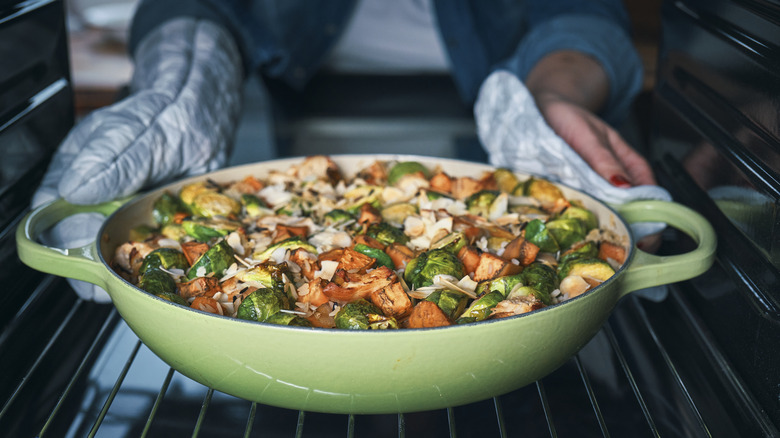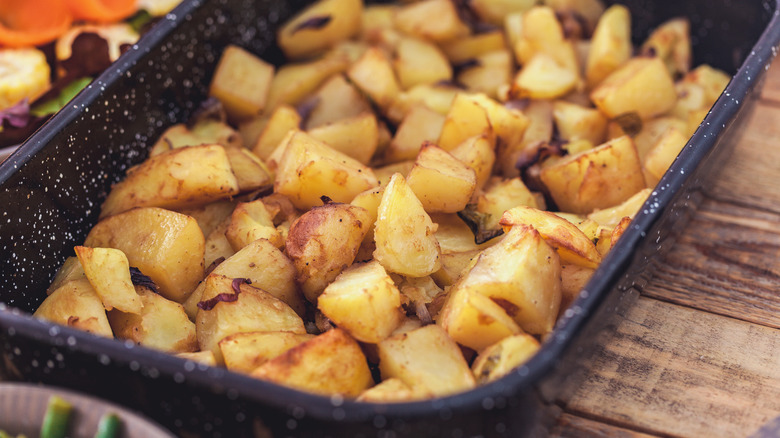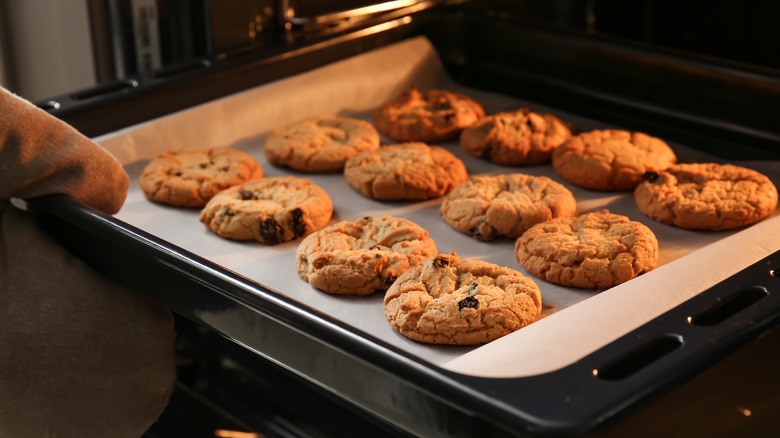Doubling A Recipe? You May Want To Ignore The Cook Times
Holidays, parties, potlucks, out-of-control midnight cravings — sometimes a recipe's original size just doesn't cut it. You love it, but you need more. You need to feed eight people, not four, or you want to double your casserole recipe for freezing, and it seems easy enough to multiply everything from the ingredients to the cooking time by two. Right? Well, if you do that, you'll likely end up with burnt casseroles and overdone veggies. Because while many ingredients can just be doubled if you're doubling a recipe, the cooking time doesn't work that way. Twice the amount of food won't necessarily need twice the cooking time.
It isn't just the extra ingredients affecting the cooking time — it's also the vessel. Because doubling a recipe means that you probably won't be cooking or baking in the pan or pot that the recipe originally called for. If the larger casserole is spread out in a wider dish, it will cook faster than if it's placed in a deeper dish. So, since you can't just set the timer for 20 minutes when the recipe calls for 10, you have to look for other cues to make sure your dish is done. There are a few rules that can act as a guide, but mostly, you'll need to rely on temperature checks, indications from the recipe, and your eyes to know when it's ready to serve.
How to know when your doubled-up dish is done
Typically, when you double a recipe, go ahead and set your timer for the original cooking time. It's very likely the food won't be done yet, but it will be a good time to start checking for other clues — then check again every five minutes or so to make sure you don't accidentally overcook your meal. For dishes that have a minimum temperature they need to reach, like steak or poultry, the thermometer should be your doneness guide. It's an easy, concrete way to know the food is ready.
Of course, not all of your doubled recipes will be so straightforward in their completion. However, most recipes tell you more than just a time when it comes to each step. They'll tell you to roast the potatoes until they're crispy, insert a toothpick into your cake to see if it comes out clean, or bake the green bean casserole until the top is golden brown. These descriptions of appearance, quality, or consistency are going to be the real cues for when the food is ready, and with them you can avoid a recipe-doubling mistake that will totally screw up your results.
When in doubt, opt for two batches
There are some exceptions, though. Even if you're more careful with how you measure cooking time, some recipes just don't hold up well to doubling. Doubling fried food recipes will lead to a soggy mess because it's harder to control the temperature of the hot oil. Active ingredients in baked goods, like baking soda and baking powder, can be finicky, and trying to double them can lead to disastrous desserts.
That doesn't mean you won't need double this kind of food, though — you may still find yourself having to make a cake for eight people, not four. So, if you're unsure of the ingredients (or, even still, hesitant about measuring the cooking time), the easiest solution is to make two separate batches. It may end up being more work in the long run, but the results are more certain. You'll be able to rely a little more on the original recipe rather than having to make calculations and take a guess based on visual cues.


